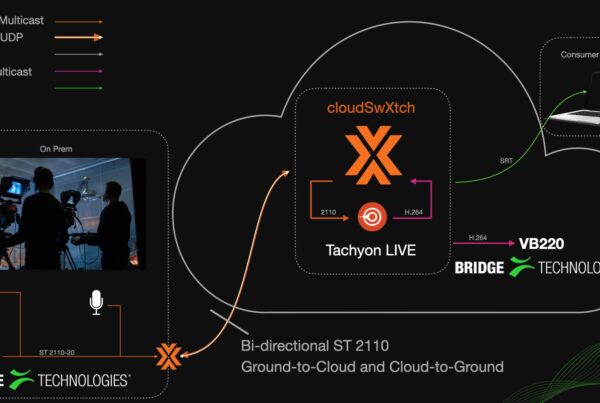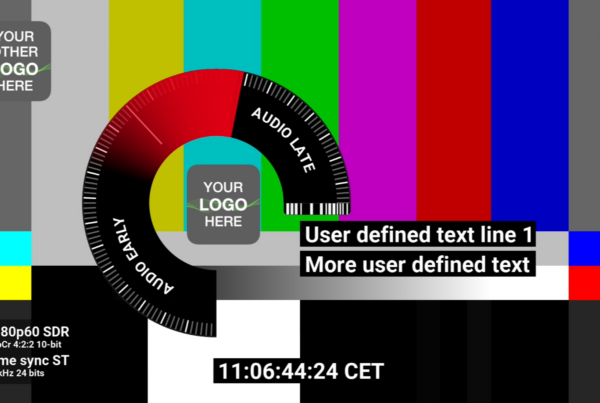Blog
Everybody in broadcast (actually, everybody in the world…) knows that sports is big business. In 2022, SportBusiness identified in their Global Media Report that the value of US sports broadcast was just over $24.5 billion, a figure which they estimated to constitute about 44% of the global market. And what’s key about that figure is: it’s the rights to broadcast alone. It doesn’t include the economic costs associated with the wider provision of the entire, vast infrastructure needed to turn those rights into the pictures that ultimately fill living rooms across the world.
 But what is it that makes sports such an important sector? Well, the obvious answer is: a lot of people like to watch them. But that doesn’t really tell us much. We need to probe the question more deeply: why do so many people enjoy sports?
But what is it that makes sports such an important sector? Well, the obvious answer is: a lot of people like to watch them. But that doesn’t really tell us much. We need to probe the question more deeply: why do so many people enjoy sports?
The answer is, of course, not singular. But knowing some of the answers has important implications for how we think about the technical job of handling sports broadcast; where our priorities should lie and what ultimately matters to the end user.
The realest of realities
Setting aside WWF for a moment (and current ongoing jokes/conspiracy theories about the state of American Football), there is almost no other form of media that can expose us to such an unfiltered, raw, action-packed form of reality. Every moment on the field is felt viscerally in both the bodies and minds of the players, and by extension, of the fans who watch at home. The reality of the emotion and investment found in a sport is what gives it a power: a power unmatchable by nearly any other form of entertainment.
A moment in time
By virtue of its ‘realness’, a moment in sports is necessarily fleeting and transient in its nature. Certainly, you can replay a recording of a moment in sports, but you can never recapture that singular, instantaneous moment of experience. At the risk of being a little poetic, to watch sports is to participate in something entirely ephemeral.
Granting a sense of collective identity
Most importantly, those moments in time are shared moments in time. Even if you are sitting alone in your living room, there is a knowledge that you are sharing a common experience with thousands – perhaps millions – of people across the globe. You are connected not just by an experience, but by a bond, a common hope, a single goal (haha) and an overarching passion.
When the truly human meets the utterly technical
These three elements: immersion in the ‘real’, the fleeting nature of time, and the desire for connection – are all part of one single idea: what it means to be human. Sports is, at its most fundamental level, a celebration of people: what they can do, who they can be, and what they share.
Which can be a tricky thing when it comes to technology, because technology has historically been a bit short of the mark when it comes to capturing the human experience in all its glory (though ChatGPT might be about to make some scary inroads on that front…).
None-the-less, understanding the truly human dimension of sport – and why that dimension is so central to its popularity – can tell us a lot about how we deliver sports on a technical level. But what exactly?
Centrally, it tells us that precision counts. Every micro-second matters. Increasingly demanding expectations regarding broadcast quality and reliability exist across all sectors, but none so more than in sports. A moment of jitter, packet drop or buffer fundamentally impacts the extent to which an audience can feel fully immersed in the moment they are watching, and thus fully connected with the world they are watching it with. If you think to the World Cup just passed, where crowds of thousands gathered in the streets, imagine the frustration – and pandemonium – if those screens (and the screens of every living room around) all received their signals at a different time. Or, horror of horrors, if the signal dropped just as Mbappé approached the goal in the 108th minute.
Our investigation of why we love sports also stresses to us the significance of sports as a global undertaking. Which means it doesn’t only have to make its way to TV screens across the globe, but it must be collected from global locations all around the world, all of which have different historical and economic backgrounds that have led to significant discrepancies in the way their technological infrastructure has advanced. Indeed, regardless of ‘inherited’ national infrastructure issues, even as we move into a largely globalized, remotely-centred ‘reset’ through the introduction of IP, there are still huge divergences in the standards and approaches used by different broadcasters and vendors in different locations.
The ultimate goal
 The key take-home of this blog: technology dealing with contribution and distribution in the field of sports needs to a) accommodate and harmonize a vast range of different technological approaches, and b) they need to do it very quickly. Like, micro-seconds of latency quickly.
The key take-home of this blog: technology dealing with contribution and distribution in the field of sports needs to a) accommodate and harmonize a vast range of different technological approaches, and b) they need to do it very quickly. Like, micro-seconds of latency quickly.
Achieving this has been, and remains, one of the key goals of Sencore’s efforts: to remain as flexible as an Olympic gymnast, as speedy as championship sprinter, and as accurate as a Masters’ golf putter. Across a range of platforms, including a number low latency solutions for remote production, contribution and distribution, we continue to push the limits of HEVC, ST 2110 and JPEG-XS UHD support, across streaming protocols that includes SRT, RIST, Zixi and HLS. This focus on integrating as many standards as possible to maximize interoperability across networks – all in a split second, on a remote basis – means we’ve seen products such as our DMG 4000 deployed as the media gateway backbone of a 100G WAN network belonging to one of the Big Four US broadcasters. Some of the most important sports moments of the past two years have passed through Sencore tech! Our commitment to delivering the truly ‘human’ nature of sports has become all the more pronounced with the introduction of Centra. Our recent blog covering its launch at IBC2022 – and its recent coverage in SVG highlights just how important this comprehensive, coordinated platform will be for continuing to ensure that fans around the world can celebrate what it means to passionately love seeing other people kick, hit and throw various types of balls around various rectangles of space.





